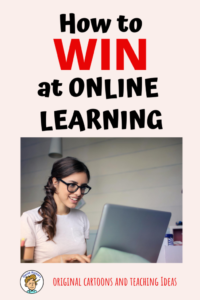I teach seniors. At the end of the year it can be difficult to engage them in anything academically, especially writing papers, even in AP Lit. Therefore, I like projects that fool them into demonstrating their understanding of what we’ve read.
My son did an art class in the winter and the final project was to construct a hat out of posterboard inspired by something they liked. His class went wild with it. Some students created the tallest hat they possibly could, and many of them included moving parts – curly spirals, or doors that opened. When I saw them I thought “This is perfect for a final project for our Flanery O’Connor unit.”
So at the end of our study of Flannery O’Connor my students chose their groups and made hats that were inspired by one of her stories. The requirements were:
1. The hat must look cool.
2. They could only use three pieces of posterboard for the structure of the hat which they had to provide (however, they could decorate it with other stuff.)
3. The hat had to include two tangible items from the story, two intangible items (themes, main ideas) and the moment of clarity that happens in each O’Connor story.
4. The hat had to have a moving part. It could be something that moved when you walked, or something on the hat you could manipulate.
5. The hat had to be wearable.
Here are some more hats:
The construction of the hats took about four days of class time – one day of planning and three days of putting it together. Since I teach AP Lit four classes out of the day, I was able to move the desks out of the way and use my room as a studio and move my freshman class to another room for four days.
At the end we had a fashion show. Someone from the group had to model the hat by walking down an imaginary runway in the classroom (one of my students made a CD of appropriate runway music.) Another member of the group had to sell the hat by describing what was on it like this:
I would encourage others to do this project for other stories or novels. The kids were definitely engaged and had to use serious problem solving skills.
The author of this article is David Rickert, who leads parallel lives as a cartoonist and teacher. When not creating comics out of thin air, David teaches high school English Language Arts in Columbus, Ohio. His witty and engaging cartoons turn abstract and complicated concepts into concrete and concise images to embed content into our long term memories. Let’s face it: he makes boring topics entertaining. Check out his Grammar Comics and more resources to bring life to your ELA instruction at his store.








